- On the other hand, thick touches are coming sometimes in addition to the already existing reliefs of the matters. It is often the case when there is a need to reveal the light.
Some matters projection can be added to the strokes in order to create extra points of hanging light.
When light prevails over texture, then the coating of the underlying matter can be much more denser, until the matter itself disappear under the light.
Brush strokes can be displayed into two main groups:
- On the one hand a very diluted paint is firstly used almost in the form of a juice. It allows a deep penetration into the matters.
Different colours are often applied without waiting for a complete drying. In this way, the blending is continuing on the canvas, which allow a very fluid gradation of the shades.
Brush strokes are often either verticals or horizontals, but rarely crossed.
In some locations, almost dry brush strokes allow to apply the paint on the reliefs of the matter only, without painting the cavities.
Generally, the paint is always diluted when there is a need to preserve the texture of the matters.

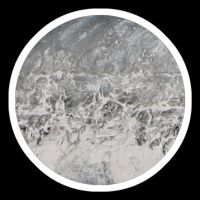
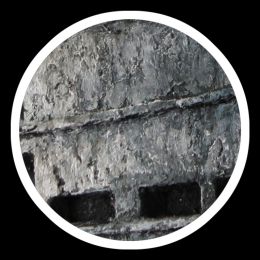
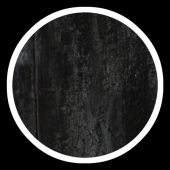
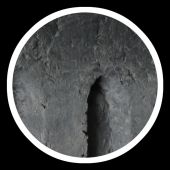
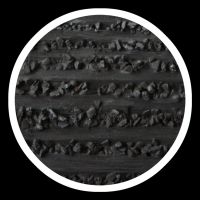
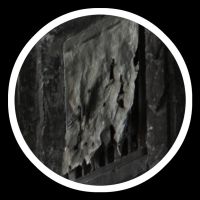
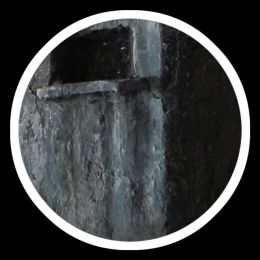
~
Hieronymus Bosch (1450-1516)
Ascent of the Blessed - 1505-1515
The most intensively dark parts are coming from pierced openings in the canvas, supplemented by dark rooms on the back. It is the only true black possible: a non-physical black given by the absence of light.
Only the doors and the windows located on the foreground have been pierced. It allows a black modulation accorded to the atmospheric perspective.
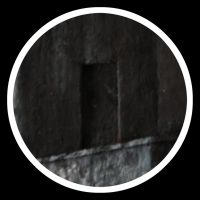
The skyline is low, it correspond to a child height vision. This angle of view reinforce the dominancy of the landscape while projecting the foreground to the viewer.
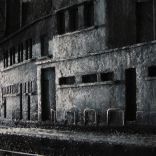
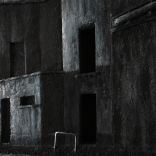
Here the pictorial logic set up by Hopper is pushed to its conclusion.
An artwork contain as much of the inner world of its author as his perception of the outter world. As a result, the Universal can emerge from a simple detail.
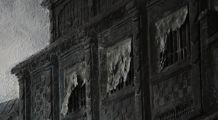
One might think that the curtain lifts, that the veil is tearing.
But the viewer who would try to look through the window of the picture wouldn't see a different interior, but only a non-physical void, a suspended time.
The greatest threat is always coming from our fellows.
A connection can be easely found between the "Eastern railway station" and the work of Edward Hopper (1882-1967).
Well-known for his paintings showing characters marked by solitude, the feeling of isolation is even more intensely noticeable through his landscapes and his light than the characters themselves.
~
Edward Hopper (1882-1967)
Early Sunday Morning (1930)
Edward Hopper (1882-1967)
Night Windows (1928)
Edward Hopper (1882-1967)
From Williamsburg Bridge (1928)

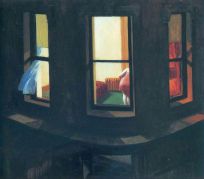
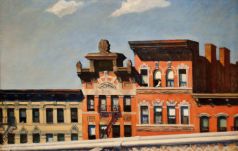
Excepted for the viaduct, each masses have a maximal chromatic range, which make them independant to each other.
Only the viaduct received uniform matter and pigment. The colour variations are coming from the external light alone.
The consistency throughout the picture is provided by the light distribution. It become more and more intense as we come closer to the center, while the outer parts are getting covered with darkness in a chiaroscuro pushed to the extreme. This light distribution can be compared to the vignetting in photography.
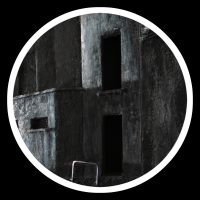
Warm greys, grey-green, grey-brown, enhanced by a dark brown wash woodstain, are conter-balanced by the grey-blue and the neutral intermediary greys.
The white parts are coming from a mix of plaster, glue, and dry pigment zinc white. The blacks are mainly coming from a mix of artificial water and dry pigment ivory black. The are also coming from a very dark gray paint, loaded with dry pigment black for fresco.

~
The light area is slightly offset from the center of the painting.
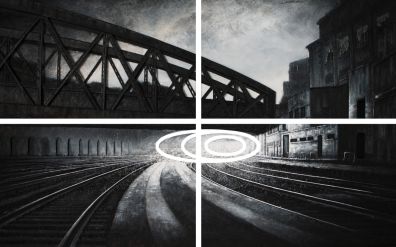
Main masses are balanced: the sky, viaduct, buildings, railway tracks, and the platforms are occupying comparable surfaces.
Theyr stability is afforded by two horizontal lines: one at the skyline on the railway tracks, the other one at the bottom of the viaduct deck. Excepted these two horizontals, the others main lines are made of curves and diagonals, enhanced by small verticals.
Mineral matters widely dominate the whole, followed by synthetic materials (artificial water) which were used as a coating for the viaduct and the railway tracks. The organic matters have been mainly used for the clouds in the sky.
Mineral matters are coming from geological time, an almost frozen time. They are giving stability to the whole. On the contrary, the organic matter seem to evaporate with the cloud, a last movement of an organic life in the process of withdrawing.
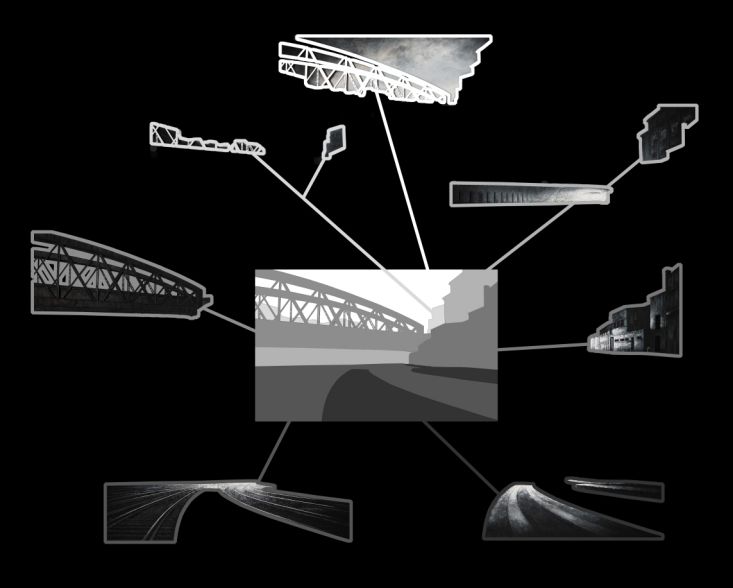
Artists have shown an early interest for the railway thematic, starting by Joseph Mallord William Turner, then by the impressionnists.
Paintings of this period are showing a vision full of confidence in the technical progress.
This positivist vision from the industrial revolution and its faith in an infinite progress is now irrevelant. It is today the complete opposite to a vision of the end of an era, which have lost even its colours.
In the meantime, two world wars followed by ideological, financial, and now climatic crisis... have separated these two visions. Which has been confirmed by the health crisis that have come three years after the finishing of this canvas.
Edouard Manet (1832-1883)
The Railway - 1872-1873
Claude Monet (1840-1926)
La Gare Saint-Lazare - 1877
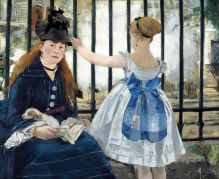
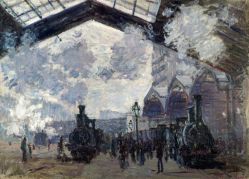
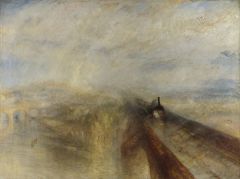
This technique has been used for the first time in 1999 with "The Saint-Jacques Tower". It allows to get a non-physical black by absence of light.
This method has been used on other canvases such as "The National Assembly" (2012-2015) or "The Cathedral" (2011-2014).
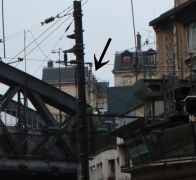
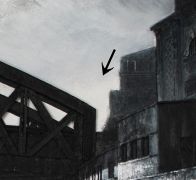
Several buildings in the background as well as the signal tower have been removed in order to let the picture take his place within the composition.
Similarly, an extra floor has been added on the building located on the second plane in order to continue the general curve line.
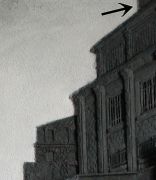
~
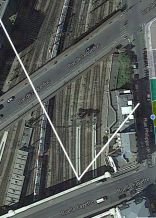
The buildings on the right side got a perspective made of multiple vanishing points in order to accentuate the curve line and get it stronger than in the original configuration.

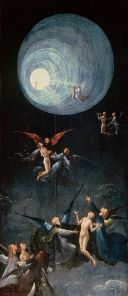
This composition made of converging curves has been inspired by an artwork from Hieronymus Bosch. More specifically from the second panel of the "Way to the Paradise" from the "Visions of the Hereafter", which is called "Ascent of the Blessed". This panel is well-known because of the large tunnel of light which has been interpreted as a vision that can be seen during a near death experience.
Here this interpretation is echoing the black and white landscape made of deserted platforms and empty buildings.
The general composition is made of curves that spiral to a very dense light area, giving an impression of a vortex.
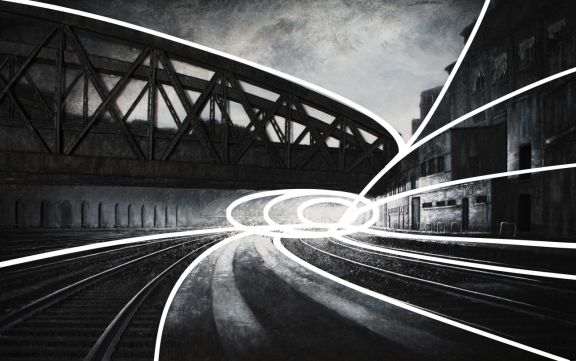
1999 - The Saint-Jacques Tower
2012-2015 - The National Assembly
2011-2014 - The Cathedral
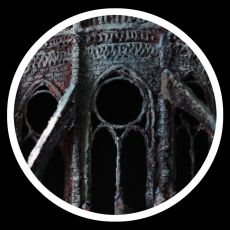

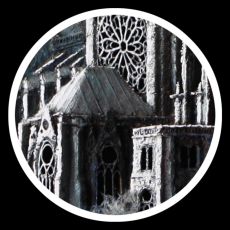
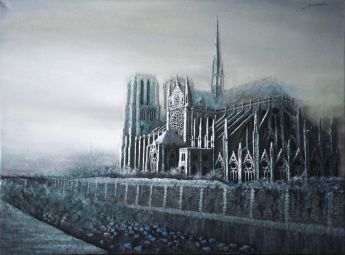
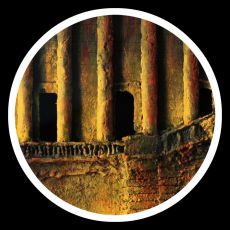
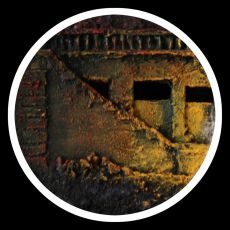
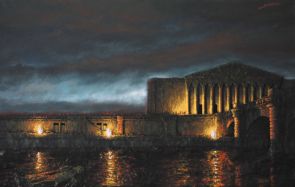
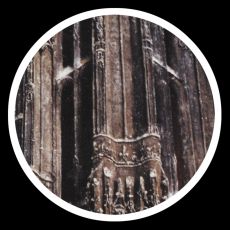
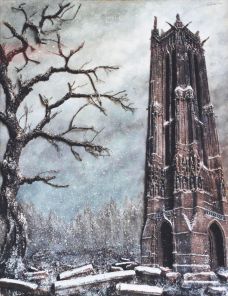

Openings have been pierced in the canvas and supplemented by a darkroom on the back.
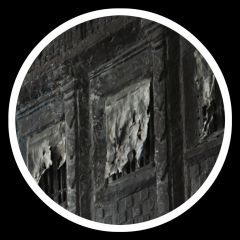
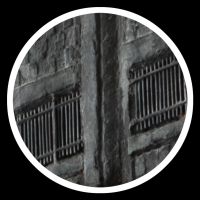
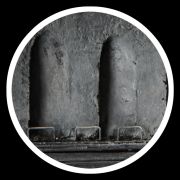
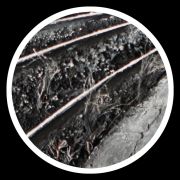
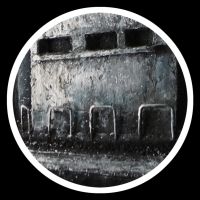
Additional details have been inserted with metal wires, cigarette paper, flax fibers, ... grids, railings, curtains, grass clumps...
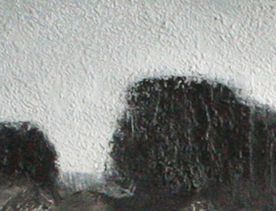
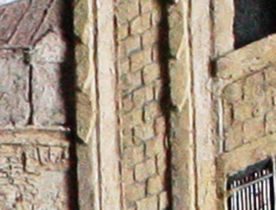
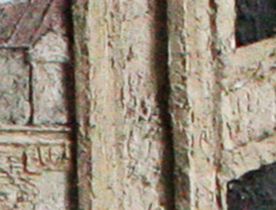
Clouds of the sky are made of cotton.
The challenge is to get the smoother transition as possible between such different matters as cotton and plaster.
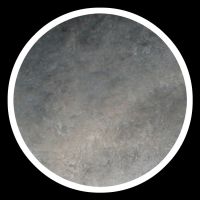
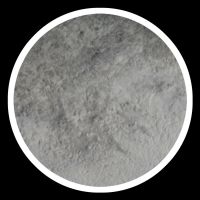
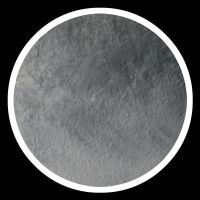
The whole canvas has been precisely engraved, excepted the elements located on the foreground which have been reduced in order to render an atmospheric perspective.
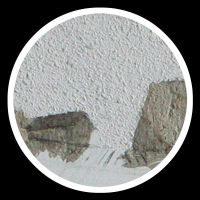
The viaduct has been built piece by piece before being mounted on the canvas.




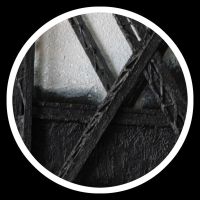
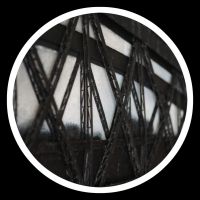
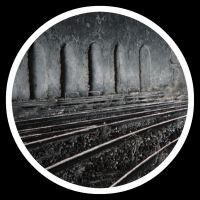
The sky has been firstly prepared with a projection of a mix of plaster and glue.
This preparation fulfills two objectives:
- Getting a background made of a random pattern opposite to the regular original pattern of the canvas.
- Getting an absorbing surface into which the paint will blend into much more progressive gradients.

The viaduct and the tracks are made of balza wood covered with a tiny coat of cement, then recovered with a polyurethane aqueous solution (artificial water).
It give a smooth texture close to the aspect of a metallic texture, while letting the different elements flexible enough to be inserted into the perspective lines.
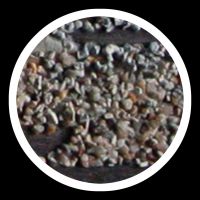
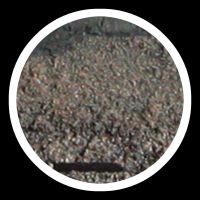
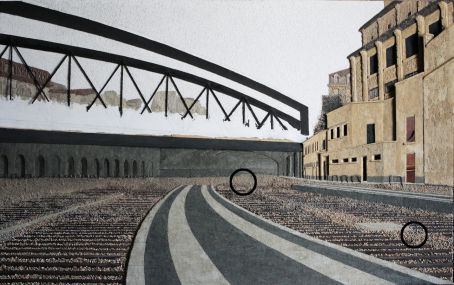
The ballast of the railway tracks is made of sand and gravels of different sizes according to theyr positioning on the canvas plane.
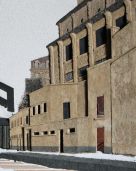
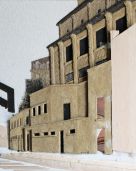
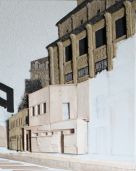
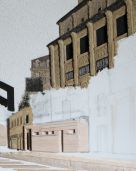
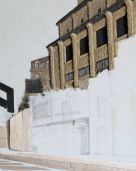
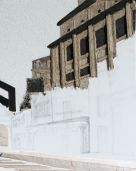
The buildings have been built with balza pre-volume before being coated with cement. This technique in use since 2012 allow to lighten the final weight of the canvas.
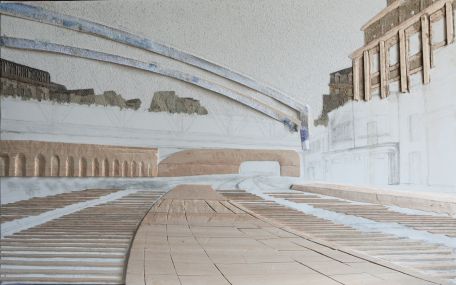
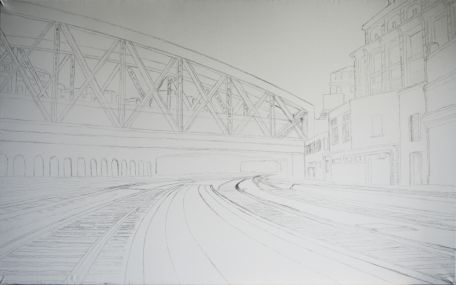
This preliminary work, including: tests of various formats, tests of lighting, checking of vanishing lines, tests of various configurations... took by itself several weeks.
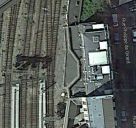
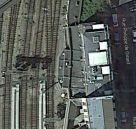
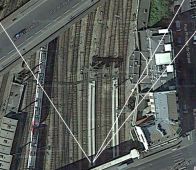
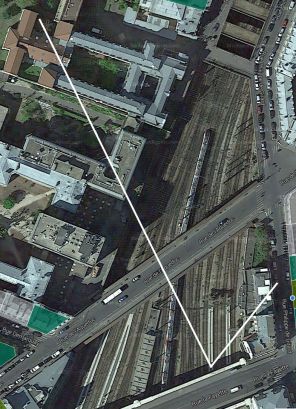
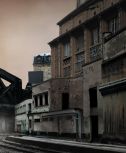

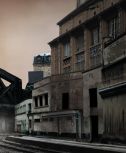

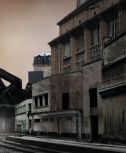
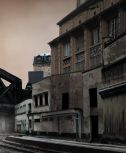
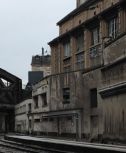
Satellite images have been used to incorporate the changes in the global configuration of the site in order to keep the proportions and the vanishing lines in coherence.


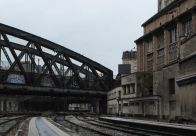
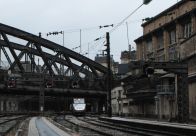
- Then the picture chosen as a working basis has been digitally reworked until finding the desired general composition.
The goal of this first work is to refine the image by removing the undesired parts (signaling system, catenaries), then to rework the curvature of the railway tracks in order to integrate them into the other curves of the composition.
The objective among others was to refine the composition to its essential elements.
Numerous attempts with various building configurations have been set before reaching a definitive line.
So the signal tower has been removed and the building line has been modified by adapting the architecture to the general composition of the canvas.




- Then one or several photo shoot when it's possible (or otherwise preparatory drawings) in order to memorize forms, work the framing and find the better viewing angle to fix the broad lines of the composition.
The photos have been deliberately taken under neutral light and grey weather, so that they have no influence on the future light of the painting.

Only then, the drawing has been made on the canvas.
Ripped curtains are hanging down the windows. Pierced holes in the canvas can be seen on some buildings here and there.
There is no visible human presence, the buildings seems to be left abandoned. There is no perceptible sign of any kind of ongoing activity.
Railway tracks are empty, There is neither signaling system nor catenaries.
The canvas is in black and white.
We are standing on the site of the "Gare de l’Est", built from 1847 by the architect François-Alexandre Duquesney and the engineer Pierre Cabanel de Sermet, and opened in 1850.
The viewing angle is located on one of the platform of the station, in front of the viaduct of the Aqueduct street.
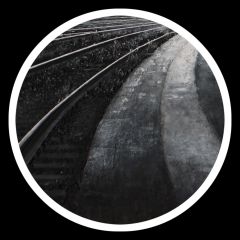
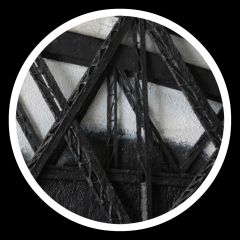
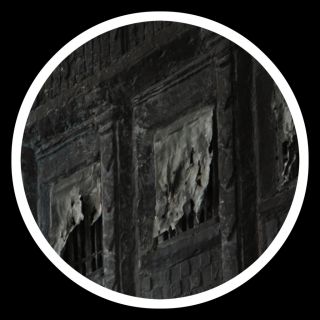
~
© Luc Dartois - February 2021

~
~
~

Page

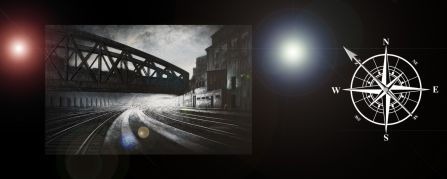

The making of this painting has been complex, starting with its preparation.
The preparatory work has been developed in several steps.
- First a raw vision intended to be worked by memory only. This is a way to get a first thought of the general atmosphere and to get the underlying guidelines which will remain during the whole construction process.
This canvas has been made during the whole year 2016 and the first months of the year 2017, for a total of one year and three months of work.
It has been exhibited for the first time in Paris in June 2017 and has been sold at the first day of its exhibition.
It is signed with a stamp on the upper right. There is a list of the components used on the back side.
The canvas is of a large format for this kind of painting, 128cm long for 80cm high.
It has been made under daylight coming from the right, South-East orientation, and also with an artificial light source coming from the left.
A platform -empty- between railway tracks. Some building lines on the right side and on the foreground on the left. A viaduct in the front side.
2016-2017 - Paris, Eastern Railway Station, viaduct of the Aqueduct Street
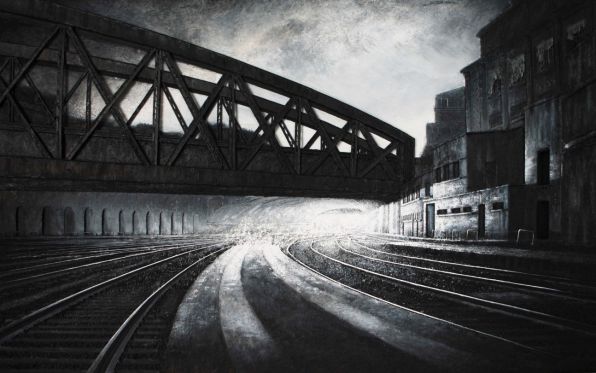

Page




Fr
Eng
Paintings and matters on canvas
Luc Dartois

Pictures, texts, videos, illustration and logos contained on this website are exclusive property of Luc Dartois.
Any other use then strictly private use, any public distribution without author's permission iis prohibited.
Copyright © Luc Dartois